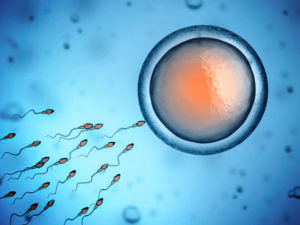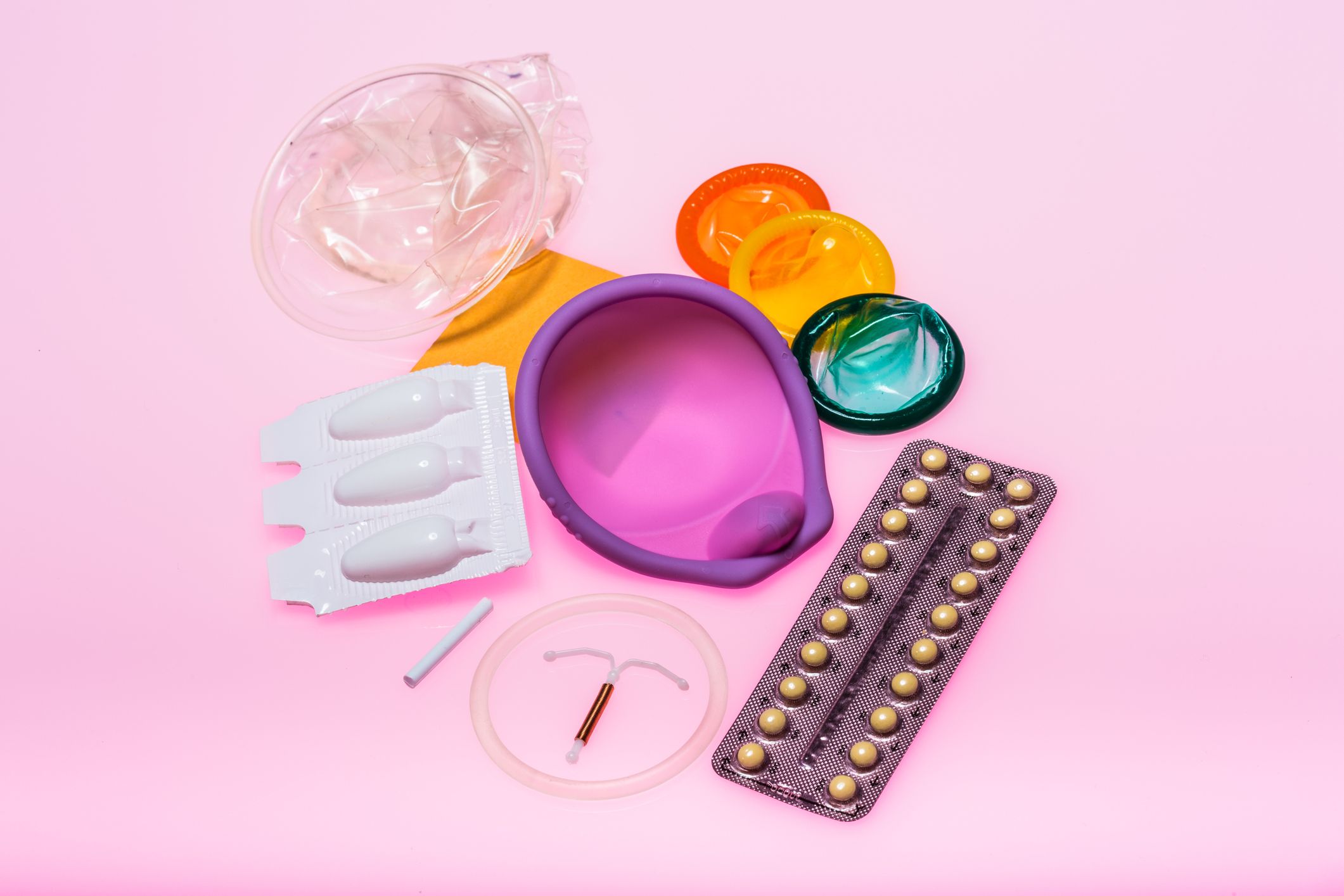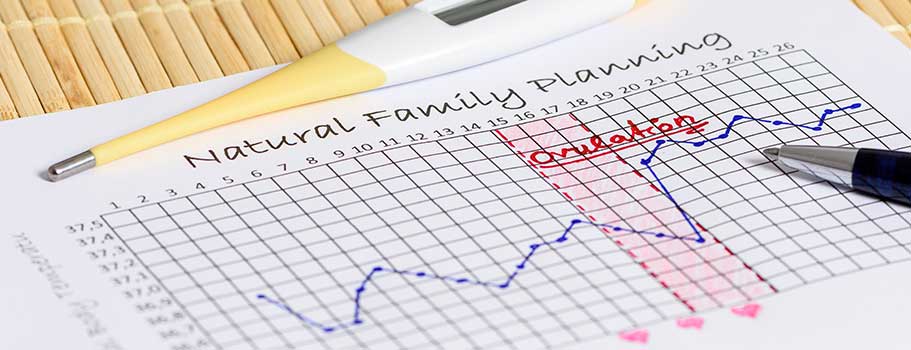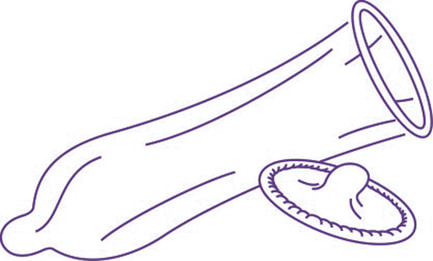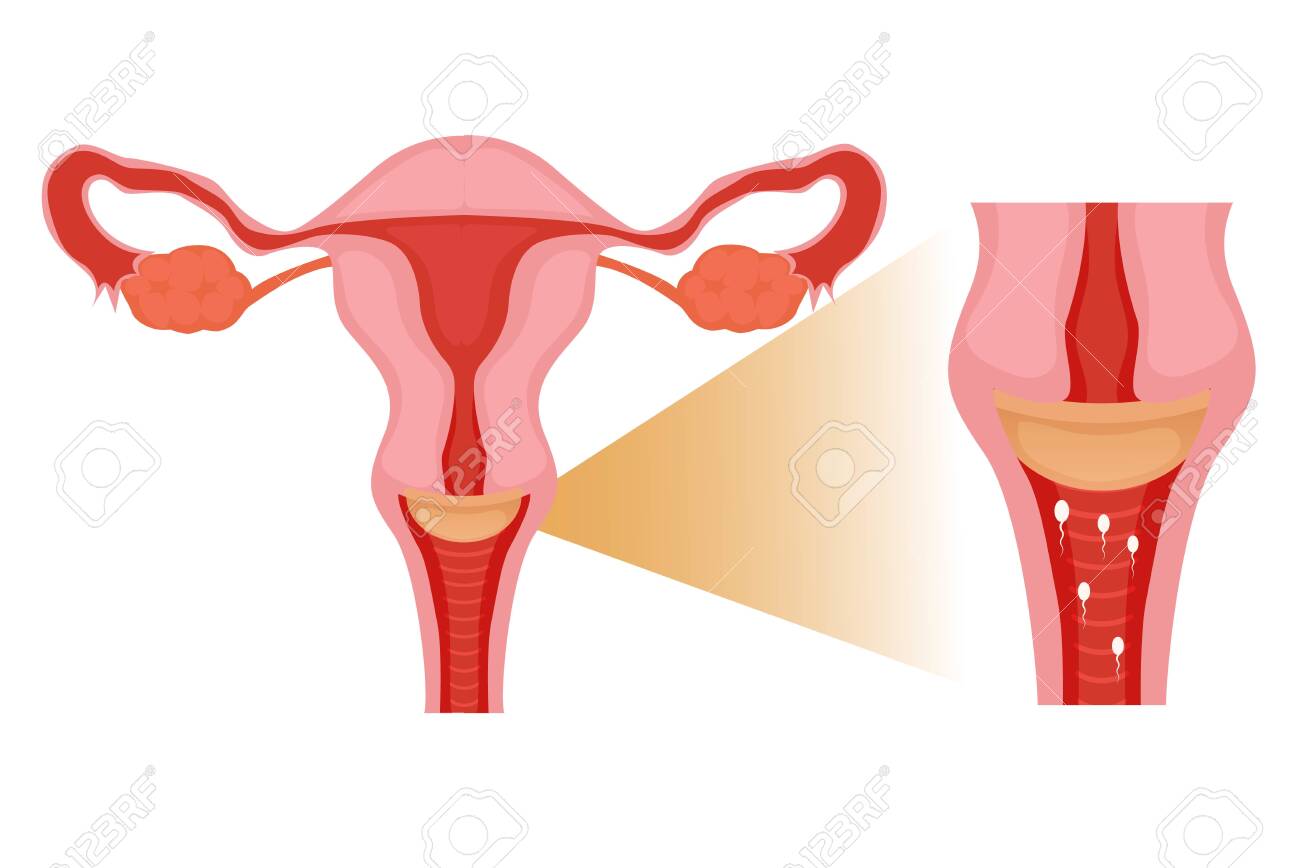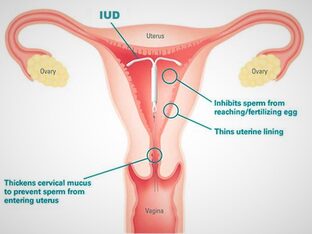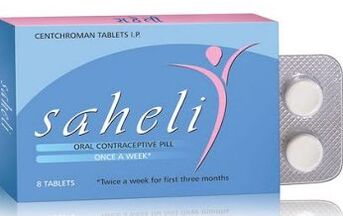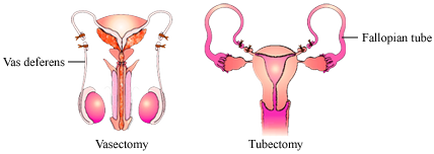ISC 12>UNIT 1 >REPRODUCTION> 4. REPRODUCTIVE HEALTH
Scope of syllabus
Definition of reproductive health, programs of reproductive health (family planning, RCH),
population explosion - role of government in controlling the population,
contraceptives methods and their methods of action (natural-periodic abstinence, withdrawal or coitus interruptus, lactational amenorrhea; artificial – barriers, spermicidal agents, IUDs, oral pills, implants and surgical methods, definition of medical termination of pregnancy (MTP) and reasons for it; causes of infertility.
Amniocentesis and its role in detecting genetic defects. Assisted reproductive technologies: IVF, IUT, ZIFT, ICSI, GIFT, AI, IUI. - The definition and application are only for general awareness.
Causes, symptoms and methods of prevention of sexually transmitted diseases (genital herpes, genital warts, hepatitis- -B, AIDS, gonorrhoea, syphilis, chlamydiasis, trichomoniasis).
population explosion - role of government in controlling the population,
contraceptives methods and their methods of action (natural-periodic abstinence, withdrawal or coitus interruptus, lactational amenorrhea; artificial – barriers, spermicidal agents, IUDs, oral pills, implants and surgical methods, definition of medical termination of pregnancy (MTP) and reasons for it; causes of infertility.
Amniocentesis and its role in detecting genetic defects. Assisted reproductive technologies: IVF, IUT, ZIFT, ICSI, GIFT, AI, IUI. - The definition and application are only for general awareness.
Causes, symptoms and methods of prevention of sexually transmitted diseases (genital herpes, genital warts, hepatitis- -B, AIDS, gonorrhoea, syphilis, chlamydiasis, trichomoniasis).
REPRODUCTIVE HEALTH
WHO - has defined it as the total well being in all aspects of reproduction, i.e., physical, emotional, behavioural & social
Reproductive health – problems and strategy
(a) India was amongst the first countries in the world to initiate to the programme “family planning” initiated in 1951.
(b) Reproductive health in a society forms a crucial part of general health.
(c) Improved programs covering wider reproduction-related areas are currently in operation under the popular name ‘Reproductive and child health care (RCH) program.’
(d) Health and education of young people and marriage and child bearing during more mature stages of life are important attributes to the reproductive health of a society.
(b) Reproductive health in a society forms a crucial part of general health.
(c) Improved programs covering wider reproduction-related areas are currently in operation under the popular name ‘Reproductive and child health care (RCH) program.’
(d) Health and education of young people and marriage and child bearing during more mature stages of life are important attributes to the reproductive health of a society.
Reproductive health programmes
Reproductive and child health care programs. [RCH]
- Improved program covering all aspects of reproductive and child health care
Major task of RCH programme
- Creating awareness among the people [about reproduction related aspects, by govt. and non-govt. agencies using A/V and print media about reproductive organs, adolescence and related changes, safe and hygienic sexual practices, sexually transmitted diseases (STD), AIDS]
- Providing facilities and support to build up reproductively healthy society.
Measures taken by Government
- Education and awareness- Through the help of audio-visuals & print media. Even family members, close relations are involved in the awareness.
Sex education was introduced in schools to provide awareness. Proper information about reproductive organs, adolescence & related changes, safe & hygienic sexual practices, sexually transmitted diseases, AIDS etc. - Raising of marriageable age i.e. Male-21 years and female-18 years.
- Incentives to couples to small families. (Hum do hamare do)
- One child norm
- Birth control by using contraceptive method
Conception and Contraception
Characteristics of an ideal contraceptive are:-
(a) User friendly
(b) Easily available
(c) Nor or least side – effects
(d) No way interferes with sexual drive
(b) Easily available
(c) Nor or least side – effects
(d) No way interferes with sexual drive
BIRTH CONTROL METHODS
Contraceptives methods and their methods of action
Natural methods include-periodic abstinence, withdrawal or coitus interruptus, lactational amenorrhea;
Artificial methods inlcude– barriers, IUDs, oral pills, implants and surgical methods
Artificial methods inlcude– barriers, IUDs, oral pills, implants and surgical methods
|
1. Natural Methods:
Avoids meeting of sperm & ovum. Periodic Abstinence - Avoid coitus from day 10 – 17 of menstrual cycle when ovulation is expected. Because chances of fertility is very high during this period, hence known as fertile period. Withdrawal or coitus interruptus - Male partner withdraws his penis from vagina before ejaculation avoiding insemination of sperms Lactational amenorrhea - Absence of menstrual cycle during first six months of intense lactational period. |
2.Barrier Methods:
|
c. Intra uterine devices (IUD’S):
Devices inserted by doctors or nurses in uterus through vagina. Examples. Cu T, Cu7, Multiload 375, Lippes loop. Cu ions released suppress sperm motility & fertilizing capacity of sperms. Hormone releasing IUDs makes the uterus unsuitable for implantation & cervix hostile to the sperm. |
c. Oral pills:
Pills are taken daily for 21 days. They are very effective with less side effects. Saheli - new oral contraceptive contains a non-steroidal preparation. It is a ‘once a week ‘pill with high contraceptive value. Injection or implantation of progesterone /estrogen under the skin. |
|
d. Surgical method:
This method is also called as STERILISATION. It is advisable for male/female partner as a terminal method to prevent any more pregnancies. In male, they’re called vasectomy, where the vas deferens is cut or tied. In female, it is called tubectomy, where a small part of the fallopian tube is cut or tied up. This method is highly effective but their reversibility is very poor. |
Advantages of barrier methods:
1. They are disposable.
2. They can be self –inserted.
3. They are reusable.
4. Prevents conception by blocking entry of sperm thru cervix.
1. They are disposable.
2. They can be self –inserted.
3. They are reusable.
4. Prevents conception by blocking entry of sperm thru cervix.
Side effects of contraceptive method:
• It is very important that the selection of contraceptive method should be taken under the consultation of the doctors.
• However, their possible ill-effects like nausea, abdominal pain, breakthrough bleeding, irregular menstrual bleeding or even breast cancer.
• It is very important that the selection of contraceptive method should be taken under the consultation of the doctors.
• However, their possible ill-effects like nausea, abdominal pain, breakthrough bleeding, irregular menstrual bleeding or even breast cancer.
Medical termination of pregnancy
Voluntary termination of pregnancy before the foetus becomes viable is called abortion or medical termination of pregnancy.
Safe period for abortion is upto 12 weeks of pregnancy.
Govt of India legalised the MTP by act -The medical termination of pregnancy act in 1971, this was amended in 2002.
However to prevent female foeticide, govt enacted a law- Prenatal diagnostic techniques act in 1994 and amended in 2003. This prohibits prenatal sex determination.
Reasons for MTP
Safe period for abortion is upto 12 weeks of pregnancy.
Govt of India legalised the MTP by act -The medical termination of pregnancy act in 1971, this was amended in 2002.
However to prevent female foeticide, govt enacted a law- Prenatal diagnostic techniques act in 1994 and amended in 2003. This prohibits prenatal sex determination.
Reasons for MTP
- Unprotected intercourse resulting in conception.
- Cases where continuation of pregnancy may pose threat to the foetus, mother or both.
- Pregnancy due to rape.
INFERTILITY
Inability to conceive or produce children even after two years of unprotected sexual relation is infertility.
Sterility is complete inability to produce children.
Primary infertility- females who have never conceived.
Secondary infertility- males or females or both.
Sterility is complete inability to produce children.
Primary infertility- females who have never conceived.
Secondary infertility- males or females or both.
Causes of infertility in males
Infertility in males can be due to-
Conditions-
Oligospermia- low sperm count.
Azoospermia- absence or very low motile sperm
- Hormonal problems
- If the hormones are not produced during puberty, the testes will not fully develop.
- If the pituitary gland is not functioning later in life, this will affect the testis and cause an interruption of sperm production.
- If the hormones are not produced during puberty, the testes will not fully develop.
- Sperm production problems
- Blockage of sperm transport
- Erection and ejaculation problems
Conditions-
Oligospermia- low sperm count.
Azoospermia- absence or very low motile sperm
Causes of infertility in female
Female infertility can be also be caused by a number of factors, including the following:
- Damage to fallopian tubes.
- Hormonal causes.
- Cervical causes. Women may have a cervical condition in which the sperm cannot pass through the cervical canal. Whether due to abnormal mucus production or a prior cervical surgical procedure.
- Uterine causes. Abnormal anatomy of the uterus; the presence of polyps and fibroids.
- Unexplained infertility. The cause of infertility in approximately 20% of couples will not be determined using the currently available methods of investigation.
Amniocentesis
Amniocentesis is a medical procedure in which amniotic fluid is removed from the uterus for testing or treatment.
Amniotic fluid contains fetal cells and various chemicals produced by the baby.
A needle is inserted through the pregnant woman’s abdominal wall, uterine wall and amniotic sac to withdraw fluid which contains cells that have been shed by the fetus. Those cells are then cultured and analysed. The position of the foetus is checked by ultrasound.
Amniocentesis can be done for various reasons:
Amniotic fluid contains fetal cells and various chemicals produced by the baby.
A needle is inserted through the pregnant woman’s abdominal wall, uterine wall and amniotic sac to withdraw fluid which contains cells that have been shed by the fetus. Those cells are then cultured and analysed. The position of the foetus is checked by ultrasound.
Amniocentesis can be done for various reasons:
- With genetic amniocentesis, a sample of amniotic fluid is tested for certain conditions — such as Down syndrome and spina bifida.
- With maturity amniocentesis, a sample of amniotic fluid is tested to determine whether the baby's lungs are mature enough for birth.
- Occasionally, amniocentesis is used to evaluate a baby for infection or other illness.
Assisted reproductive technology
Invitro fertilisation
In Vitro Fertilization is a one assisted reproductive technology (ART) commonly referred to as IVF. IVF is the process of fertilization by manually combining an egg and sperm in a laboratory dish, and then transferring the embryo to the uterus.
The procedure includes the following steps
Zygote Intrafallopian Transfer (ZIFT)combines aspects of both IVF and GIFT. Protocols for ovarian stimulation are similar to those used for IVF and GIFT. Eggs are collected and fertilized by the partner’s sperm in the laboratory. What makes ZIFT different from IVF is that the embryo is placed into the woman's fallopian tube via laparoscopy instead of the uterus.
Intra cytoplasmic sperm injection (ICSI)
Intra cytoplasmic sperm injection (ICSI) is another specialized procedure to form an embryo in the lab in which a sperm is directly injected into the ovum.
Gamete Intrafallopian Transfer (GIFT), developed in 1984. In this procedure mixture of sperm and eggs is placed directly into one of the woman's fallopian tubes during a laparoscopy. Conception occurs in the fallopian tube. Once fertilized, the embryo then travels into the uterus, just as in a natural cycle.
Artificial Insemination (AI)
Infertility cases either due to inability of the male partner to inseminate the female or due to very low sperms counts in the ejaculates could be corrected by artificial insemination.
In the technique, the semen collected either from the husband or a healthy donor is artificially introduced into the vagina or into the uterus (IUI - Intra Uterine Insemination) of the female.
Adoption – can be done from orphanage / relatives.
In Vitro Fertilization is a one assisted reproductive technology (ART) commonly referred to as IVF. IVF is the process of fertilization by manually combining an egg and sperm in a laboratory dish, and then transferring the embryo to the uterus.
The procedure includes the following steps
- Monitoring and stimulating the development of follicles in the ovaries. suppressing the natural cycle by medications and then giving the fertility hormone FSH. This induces production of many ova.
- Collection of these ova through a needle.
- Collection or securing the sperms.
- Combining the eggs and sperm together in the laboratory and providing the appropriate environment for fertilization and early embryo growth.
- Transferring embryos into the uterus.
Zygote Intrafallopian Transfer (ZIFT)combines aspects of both IVF and GIFT. Protocols for ovarian stimulation are similar to those used for IVF and GIFT. Eggs are collected and fertilized by the partner’s sperm in the laboratory. What makes ZIFT different from IVF is that the embryo is placed into the woman's fallopian tube via laparoscopy instead of the uterus.
Intra cytoplasmic sperm injection (ICSI)
Intra cytoplasmic sperm injection (ICSI) is another specialized procedure to form an embryo in the lab in which a sperm is directly injected into the ovum.
Gamete Intrafallopian Transfer (GIFT), developed in 1984. In this procedure mixture of sperm and eggs is placed directly into one of the woman's fallopian tubes during a laparoscopy. Conception occurs in the fallopian tube. Once fertilized, the embryo then travels into the uterus, just as in a natural cycle.
Artificial Insemination (AI)
Infertility cases either due to inability of the male partner to inseminate the female or due to very low sperms counts in the ejaculates could be corrected by artificial insemination.
In the technique, the semen collected either from the husband or a healthy donor is artificially introduced into the vagina or into the uterus (IUI - Intra Uterine Insemination) of the female.
Adoption – can be done from orphanage / relatives.
Sexually transmitted diseases ( STDs)
Diseases or infections which are transmitted sexually through sexual intercourse are called as Sexually Transmitted Diseases (STDs) or Venereal Diseases (VDs) or reproductive tract infections. STDs can be classified as viral, bacterial, protozoan, fungal, etc.
HOW ARE STDS CAUSED?
Depending on the disease, STDs can be spread with any type of sexual activity. STDs are most often caused by viruses and bacteria.
Various types of Sexually Transmitted Diseases:
The various types of sexually transmitted diseases include gonorrhoea, syphilis, genital herps, chancroid and of course the most common HIV leading to AIDS.
HOW ARE STDS CAUSED?
Depending on the disease, STDs can be spread with any type of sexual activity. STDs are most often caused by viruses and bacteria.
Various types of Sexually Transmitted Diseases:
The various types of sexually transmitted diseases include gonorrhoea, syphilis, genital herps, chancroid and of course the most common HIV leading to AIDS.
Chlamydiasis
Chlamydiasis is a sexually transmitted disease in humans caused by the bacterium Chlamydia trachomatis. Chlamydiasis is a major infectious cause of human genetial and eye diseases.
Chlamydiasis was once the most important cause of blindness. the infection can spread from eye to eye by fingers, shared towels, eye seeking flies, and cloths etc.
Chlamydiasis is a sexually transmitted disease in humans caused by the bacterium Chlamydia trachomatis. Chlamydiasis is a major infectious cause of human genetial and eye diseases.
Chlamydiasis was once the most important cause of blindness. the infection can spread from eye to eye by fingers, shared towels, eye seeking flies, and cloths etc.
Prevention
STDs are a major threat to a healthy society. Therefore early detection or prevention and cure of these Diseases are given prime consideration under Reproductive health-care programmes though all person are vulnerable to these infections, their incidences are reported to be very high among the age group of 15-24years.these infections can be prevented by following a few simple rules which include:
Avoid sex with unknown partners or multiple partners
Always use condoms during coitus
In case of doubt, go to a qualified doctor for early detection and get complete treatment if diagnosed with disease.
STDs are a major threat to a healthy society. Therefore early detection or prevention and cure of these Diseases are given prime consideration under Reproductive health-care programmes though all person are vulnerable to these infections, their incidences are reported to be very high among the age group of 15-24years.these infections can be prevented by following a few simple rules which include:
Avoid sex with unknown partners or multiple partners
Always use condoms during coitus
In case of doubt, go to a qualified doctor for early detection and get complete treatment if diagnosed with disease.
